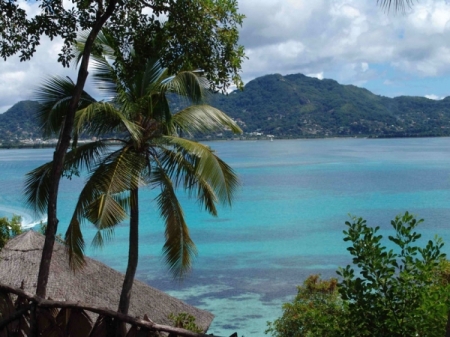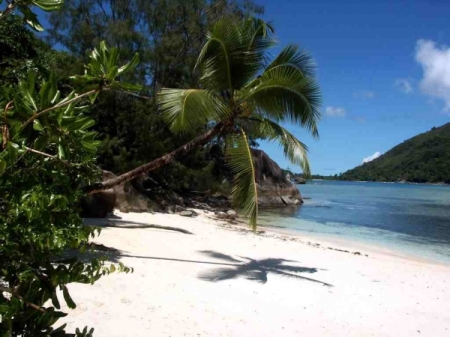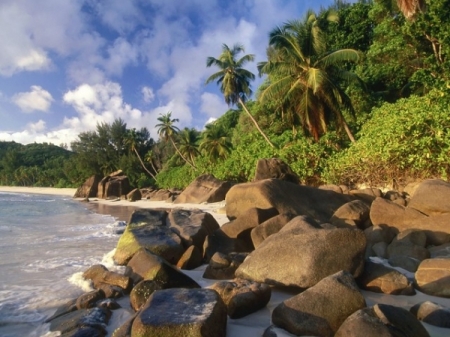Mahé, the largest island of the Seychelles Archipelago, is situated
in the Republic of Seychelles in the western Indian Ocean. The capital
city Victoria, the wonderful beaches, and the lush green vegetation of
the island make it one of the mostly visited tourist destinations in the
world.
Mahé, housing a well equipped international airport, destinations
that provides you with relaxation and the much-needed break from the
monotonous chores of daily life, attracts a good number of visitors all
through the year. Surrounded with the calm and quiet neighbouring
islands.
Mahé also serves as the base to access all the neighbouring islands on the ocean, ideal to make your weekend itinerary.
This area is suited to well-off honeymooners and families, it appeals to
special-interest groups. Prices of accommodation and every day living
here are high here. This is predominantly an international resort
complexes and medium-sized hotels, all with modern facilities. There are
family-run guesthouses and bungalows which are interesting
cultural-exchange alternatives.
Mahé has a comfortable weather with temperature remaining between
26°C to 29°C all through the year. However, during the month of November
to February, the island gets a good amount of rain.
Due to the position of the island, which is beyond the cyclone belt,
you can keep your worries of high storm or thunderstorm aside. Looking
at the Southeast trade winds and the Northwest monsoon the best time to
visit Mahé would be between March and October.
Locality:
Mahe is situated off the east coast of Africa, in the Indian Ocean
(640 mls NE of Madagascar and 975 mls E of Kenya). The international
airport is on the E coast, 6 mls SE of the nation’s capital, Victoria).
The largest and one of the most northerly of the Seychelles, an
archipelago of 115 islands. Its nearest neighbours are Silhouette,
Praslin and La Digue.
The beaches here offer a wide choice, with around 70 in all, small or
large, deserted or crowded, highly visible or hidden away in some
remote part of the island. Beau Vallon, the main tourist beach on the NW
coast, is a 2-ml-long arc of white sand with clear waters and a wide
range of water sports on offer, it is also the calmest of the beaches,
so good for young families.
Victoria offers a range of locally produced wares and a daily market
for fresh fish and vegetables; the Codevar Centre has a wide selection
of local art and crafts. All villages have small, basic grocery stores
for every day living.
During the daytime there are many beach and water sports, including
snorkelling, diving and sailing. There are also acilities for golf,
horse riding, paragliding, bird-watching, walking and hiking.
The nightlife here is based mostly in hotels offering evening
entertainment programmes, from barbecue nights to dinner dances and folk
singing. There is one cinema in Victoria, a national theatre, 5
discos/nightclubs which are open mostly at weekend, and a couple of
hotel-based casinos.
The main choice of food here is by far is creole, but many eateries
offer a more bland “international” cuisine for those who can’t take the
spice. A reputable pizzeria at Beau Vallon. Several takeaways can be
found in Victoria. A few Chinese and Indian restaurants exist in the
bigger hotels.
Most of the religious festivals that are celebrated in Port Victoria
are related Roman Catholicism like Easter, Corpus Christi on June 10,
The Assumption on August 15, and the Immaculate Conception on December
8. Festival Kreole is celebrated every year at the end of October to
showcase the Crèole culture and tradition to the outside world.







